Durability Properties of Concrete Supplemented with Recycled CRT Glass as Cementitious Material
Abstract
:1. Introduction
2. Materials and Methods
2.1. Materials
2.1.1. Cementitious Materials
2.1.2. Aggregate
2.2. Mix Design
2.3. Test Methods
2.3.1. Testing of Fresh Concrete
2.3.2. Testing of Hardened Concrete
Alkali-Silicate Reactivity (ASR)
Freeze-Thaw Resistance of Concrete
Freeze-Thaw Resistance with de-Icing Salts-Scaling
Testing of Shrinkage in the Air
Testing of Resistance to Sulfate Attack
SEM and EDS Analyses
3. Results and Discussion
3.1. Characteristics of Fresh Concrete with Added Finely Ground CRT Glass
3.2. Compressive Strength
3.3. Alkali-Silicate Reactivity
3.4. Freeze-Thaw Resistance of Concrete
3.5. Resistance of Concrete to Freeze/Thaw with De-Icing Salt
3.6. Depth of Penetration of Water under Pressure
3.7. Resistance to Wear by Abrasion
3.8. Testing of Shrinkage due to Drying in Air
3.9. Water Absorption
3.10. Testing Resistance to Sulfate Attack
3.11. SEM and EDS Analysis
4. Conclusions
Author Contributions
Funding
Institutional Review Board Statement
Informed Consent Statement
Data Availability Statement
Acknowledgments
Conflicts of Interest
References
- Baldé, C.; Wang, F.; Kuehr, R.; Huisman, J. The Global e-Waste Monitor–2014; United Nations University: Bonn, Germany, 2015; pp. 1–80. [Google Scholar]
- Singh, N.; Li, J.; Zeng, X. Global responses for recycling waste CRTs in e-waste. Waste Manag. 2016, 57, 187–197. [Google Scholar] [CrossRef]
- Johnstown, C.E. (Ed.) European Waste Catalogue and Hazardous Waste List; Environmental Protection Agency: Wexford, Ireland, 2002; pp. 1–49.
- Lee, G.; Poon, C.S.; Wong, Y.L.; Ling, T.C. Effect of recycled fine glass aggregates on the properties of dry-mixed concrete blocks. Const. Build. Mater. 2013, 38, 638–643. [Google Scholar] [CrossRef]
- Zhao, H.; Poon, C.S.; Ling, T.-C. Utilizing recycled cathode ray tube funnel glass sand as river sand replacement in the high-density concrete. J. Clean. Prod. 2013, 51, 184–190. [Google Scholar] [CrossRef]
- Romero, D.; James, J.; Mora, R.; Hays, C.D. Study on the mechanical and environmental properties of concrete containing cathode ray tube glass aggregate. Waste Manag. 2013, 33, 1659–1666. [Google Scholar] [CrossRef]
- Ling, T.C.; Poon, C.S. Use of recycled CRT funnel glass as fine aggregate in dry mixed concrete paving blocks. J. Clean. Prod. 2014, 68, 209–215. [Google Scholar] [CrossRef]
- Spiesz, P.; Rouvas, S.; Brouwers, H. Utilization of waste glass in translucent and photocatalytic concrete. Constr. Build. Mater. 2016, 128, 436–448. [Google Scholar] [CrossRef]
- Liu, T.; Qin, S.; Zou, D.; Song, W. Experimental investigation on the durability performances of concrete using cathode ray tube glass as fine aggregate under chloride ion penetration or sulfate attack. Constr. Build. Mater. 2018, 163, 634–642. [Google Scholar] [CrossRef]
- Song, W.; Zou, D.; Liu, T.; Teng, J.; Li, L. Effects of recycled CRT glass fine aggregate size and content on mechanical and damping properties of concrete. Constr. Build. Mater. 2019, 202, 332–340. [Google Scholar] [CrossRef]
- Rajabipour, F.; Maraghechi, H.; Fischer, G. Investigating the Alkali-Silica Reaction of Recycled Glass Aggregates in Concrete Materials. J. Mater. Civ. Eng. 2010, 22, 1201–1208. [Google Scholar] [CrossRef]
- Maraghechi, H.; Maraghechi, M.; Rajabipour, F.; Pantano, C. Pozzolanic reacitivity of recycled glass powder at elevated temperatures: Reaction stoichiometry, reaction products and effect of alkali activation. Cem. Concr. Compos. 2014, 53, 105–114. [Google Scholar] [CrossRef]
- Shayan, A.; Xu, A. Performance of glass powder as a pozzolanic material in concrete: A field trial on concrete slabs. Cem. Concr. Res. 2006, 36, 457–468. [Google Scholar] [CrossRef]
- Idir, R.; Cyr, M.; Tagnit-Hamou, A. Pozzolanic properties of fine and coarse color—Mixed glass cullet. Cem. Concr. Compos. 2011, 33, 19–29. [Google Scholar] [CrossRef]
- Manullang, R.J.; Samadhi, T.W.; Purbasari, A. Formulation of portland composite cement using waste glass as a supplementary cementitious material. In AIP Conference Proceedings; AIP Publishing LLC.: New York, NY, USA, 2017. [Google Scholar] [CrossRef] [Green Version]
- Shi, C.; Wu, Y.; Riefler, C.; Wang, H. Characteristics and pozzolanic reactivity of glass powder. Cem. Concr. Res. 2005, 35, 987–993. [Google Scholar] [CrossRef]
- Schwarz, N.; Cam, H.; Neithalath, N. Influence of a fine glass powder on the durability characteristics of concrete and its comparison to fly ash. Cem. Concr. Compos. 2008, 30, 486–496. [Google Scholar] [CrossRef]
- Khmiri, A.; Chaabouni, M.; Samet, B. Chemical behaviour of ground waste glass when used as partial cement replacement in mortars. Constr. Build. Mater. 2013, 44, 74–80. [Google Scholar] [CrossRef]
- Grdić, D.; Ristić, N.; Topličić-Ćurčić, G.; Đorđević, D. Effects of addition of finely ground CRT glass on the properties of cement paste and mortar. Građevinar 2020, 72, 1–10. [Google Scholar] [CrossRef]
- Grinys, A.; Balamurugan, M.; Augonis, A.; Ivanauskas, E. Mechanical Properties and Durability of Rubberized and Glass Powder Modified Rubberized Concrete for Whitetopping Structures. Materials 2021, 14, 2321. [Google Scholar] [CrossRef] [PubMed]
- Gimenez-Carbo, E.; Soriano, L.; Roig-Flores, M.; Serna, P. Characterization of Glass Powder from Glass Recycling Process Waste and Preliminary Testing. Materials 2021, 14, 2971. [Google Scholar] [CrossRef] [PubMed]
- Belebchouche, C.; Moussaceb, K.; Bensebti, S.-E.; Aït-Mokhtar, A.; Hammoudi, A.; Czarnecki, S. Mechanical and Microstructural Properties of Ordinary Concrete with High Additions of Crushed Glass. Materials 2021, 14, 1872. [Google Scholar] [CrossRef] [PubMed]
- Roz-Ud-Din, N.; Soroushian, P. Strength and durability of recycled aggregate concrete containing milled glass as partial replacement for cement. Constr. Build. Mater. 2012, 29, 368–377. [Google Scholar]
- Aliabdo, A.A.; Abd Elmoaty, A.E.M.; Aboshama, A.Y. Utilization of waste glass powder in the production of cement and concrete. Constr. Build. Mater. 2016, 124, 866–877. [Google Scholar] [CrossRef]
- Islam, G.M.S.; Rahman, M.H.; Kazi, N. Waste glass powder as partial replacement of cement for sustainable concrete practice. Int. J. Sustain. Built Environ. 2017, 6, 37–44. [Google Scholar] [CrossRef] [Green Version]
- Omran, A.F.; Morin, E.D.; Harbec, D.; Tagnit-Hamou, A. Long-term performance of glass-powder concrete in large-scale field application. Constr. Build. Mater. 2017, 135, 43–58. [Google Scholar] [CrossRef]
- Jihwan, K.; Jae-Heum, M.; Shim, J.W.; Jongsung, S.; Hyeon-Gi, L.; Goangseup, Z. Durability properties of a concrete with waste glass sludge exposed to freeze-and-thaw condition and de-icing salt. Constr. Build. Mater. 2014, 66, 398–402. [Google Scholar]
- Zidol, A.; Tognonvi, M.; Tagnit-Hamou, A. Effect of glass powder on concrete sustainability. New J. Glass Ceram. 2017, 7, 34–47. [Google Scholar] [CrossRef] [Green Version]
- Lee, H.; Hanif, A.; Usman, M.; Sim, J.; Oh, H. Performance evaluation of concrete incorporating glass powder and glass sludge wastes as supplementary cementing material. J. Clean. Prod. 2018, 170, 683–693. [Google Scholar] [CrossRef]
- Ling, T.C.; Poon, C.S. Effect of particle size of treated CRT funnel glass on properties of cement mortars. Mater. Struct. 2013, 46, 25–34. [Google Scholar] [CrossRef]
- Taha, B.; Nounu, G. Properties of concrete contains mixed colour waste recycled glass as sand and cement replacement. Constr. Build. Mater. 2008, 22, 713–720. [Google Scholar] [CrossRef]
- Malik, M.I.; Bashir, M.; Ahmed, S.; Tariq, T.; Chowdhary, U. Study of concrete involving use of waste glass as partial replacement of fine aggregates. IOSR J. Eng. 2013, 3, 8–13. [Google Scholar] [CrossRef]
- SRPS EN 12350-2: Testing Fresh Concrete—Part 2: Slump Test; Institute for Standardization of Serbia: Belgrade, Serbia, 2019.
- SRPS EN 12350-6: Testing Fresh Concrete—Part 6: Density; Institute for Standardization of Serbia: Belgrade, Serbia, 2019.
- SRPS EN 12350-7: Testing Fresh Concrete—Part 7: Air Content-Pressure Methods; Institute for Standardization of Serbia: Belgrade, Serbia, 2019.
- SRPS EN 12390-3: Testing Hardened Concrete—Part 3: Compressive Strength of Test Specimens; Institute for Standardization of Serbia: Belgrade, Serbia, 2019.
- ASTM C227: Standard Test Method for Potential Alkali Reactivity of Cement-Aggregate Combinations (Mortar-Bar Method); American Society for Testing and Materials: West Conshohocken, PA, USA, 2010.
- SRPS U.M1.206: Concrete-Specification, Performance, Production and Conformity—Rules for the Implementation of SRPS EN 206-1; Annex R-freeze-thaw resistance; Institute for Standardization of Serbia: Belgrade, Serbia, 2013.
- SRPS CEN-TS 12390-9: Testing Hardened Concrete—Part 9: Freeze-Thaw Resistance with De-Icing Salts-Scaling; Institute for Standardization of Serbia: Belgrade, Serbia, 2017.
- SRPS EN 12390-8: Testing Hardened Concrete—Part 8: Depth of Penetration of Water under Pressure; Institute for Standardization of Serbia: Belgrade, Serbia, 2019.
- SRPS EN 1340—Concrete Kerb Units—Requirements and Test Methods, Annex H-Measuring of Abrasion according to the Böhme Test; Institute for Standardization of Serbia: Belgrade, Serbia, 2012.
- UNI 6555—Concrete Made With Aggregate Maximum Size 30 mm—Hydraulic Shrinkage Determination; Ente Nazionale Italiano di Unificazione (UNI): Milan, Italy, 1973.
- SRPS EN 13755: Natural Stone Test Methods-Determination of Water Absorption at Atmospheric Pressure; Institute for Standardization of Serbia: Belgrade, Serbia, 2009.
- ASTM C1231-Standard Practice for Use of Unbonded Caps in Determination of Compressive Strength of Hardened Concrete Cylinders; American Society for Testing and Materials: West Conshohocken, PA, USA, 2014.
- ASTM C33/C33M-Standard Specification for Concrete Aggregates West Conshohocken; American Society for Testing and Materials: West Conshohocken, PA, USA, 2013.
- Matos, A.M.; Sousa-Coutinho, J. Durability of mortar using waste glass powder as cement replacement. Const. Build. Mater. 2012, 36, 205–215. [Google Scholar] [CrossRef]
- Neville, A.M.; Brooks, J.J. Concrete Technology; Pearson Education Asia Pte Ltd.: Singapore, 2001; p. 431. [Google Scholar]
- Carsana, M.; Frassoni, M.; Bertolini, L. Comparison of ground waste glass with other supplementary cementitious materials. Cem. Concr. Compos. 2014, 45, 39–45. [Google Scholar] [CrossRef]
- Özkan, Ö.; Yüksel, I. Studies on mortars containing waste bottle glass and industrial by-products. Constr. Build. Mater. 2008, 22, 1288–1298. [Google Scholar] [CrossRef]
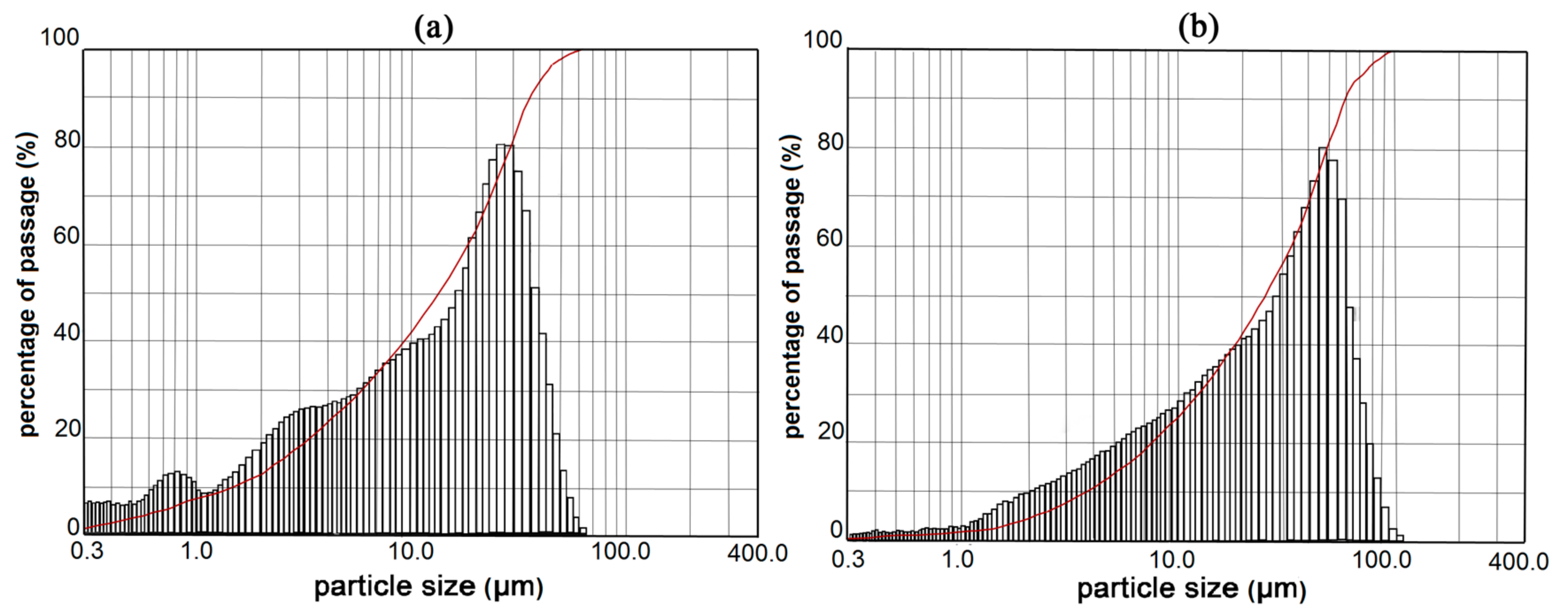
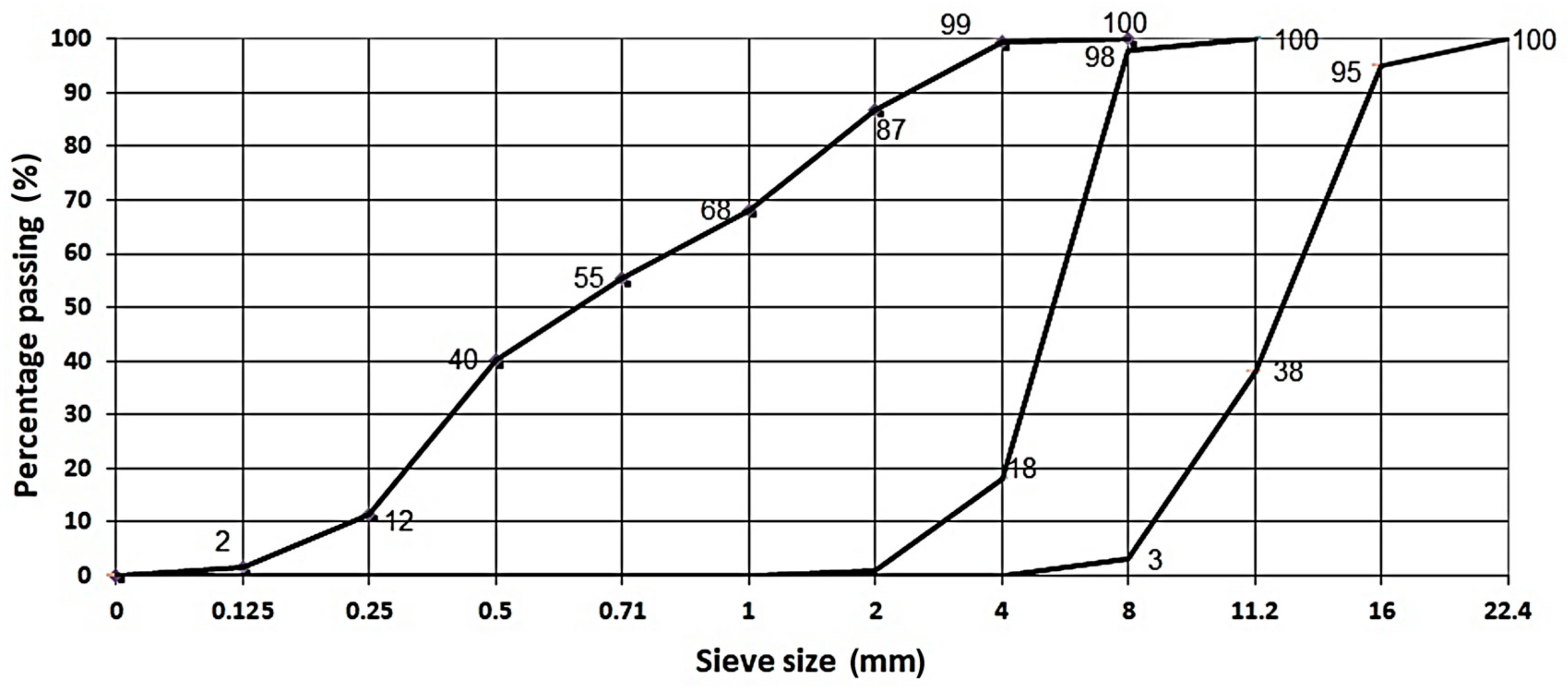
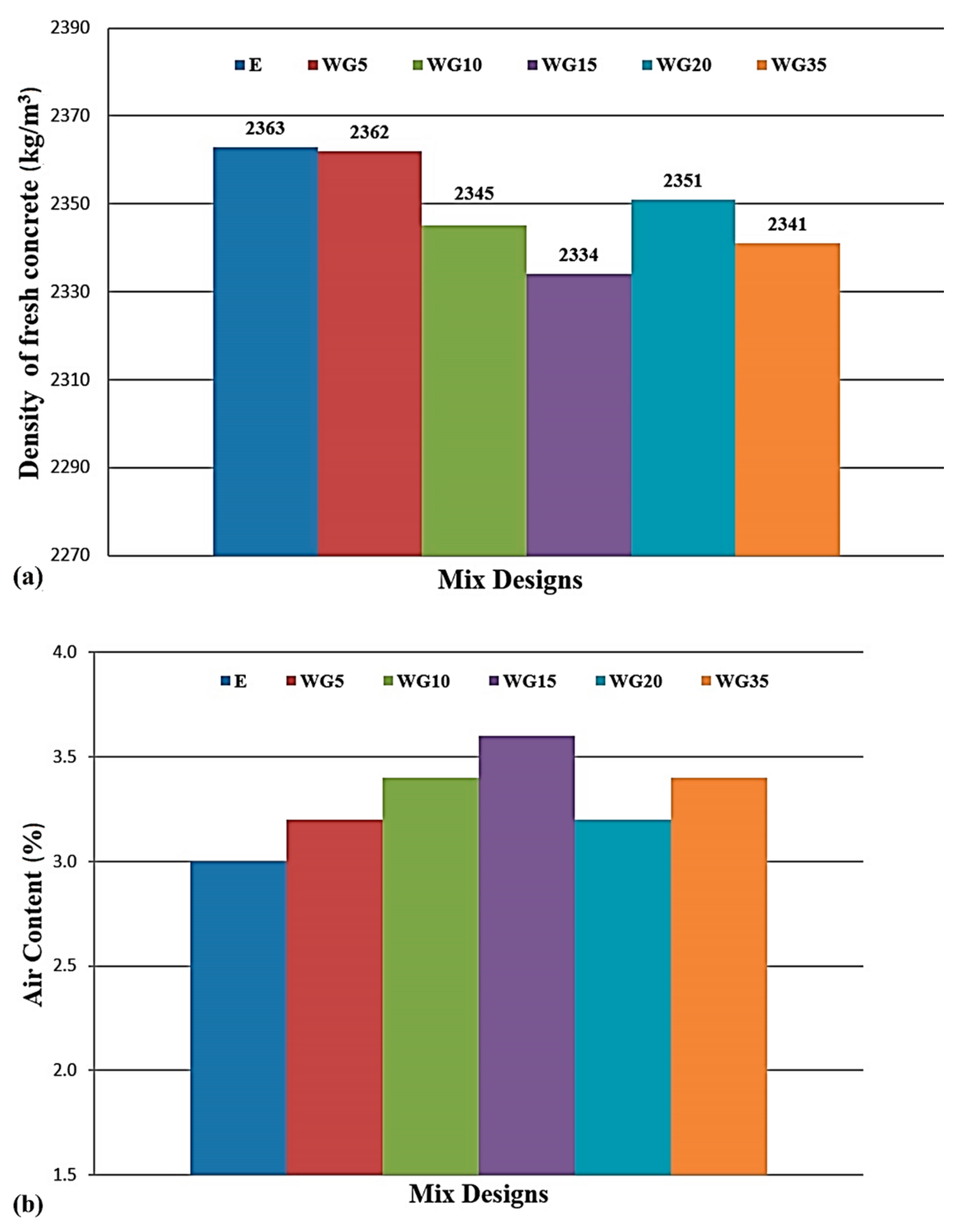
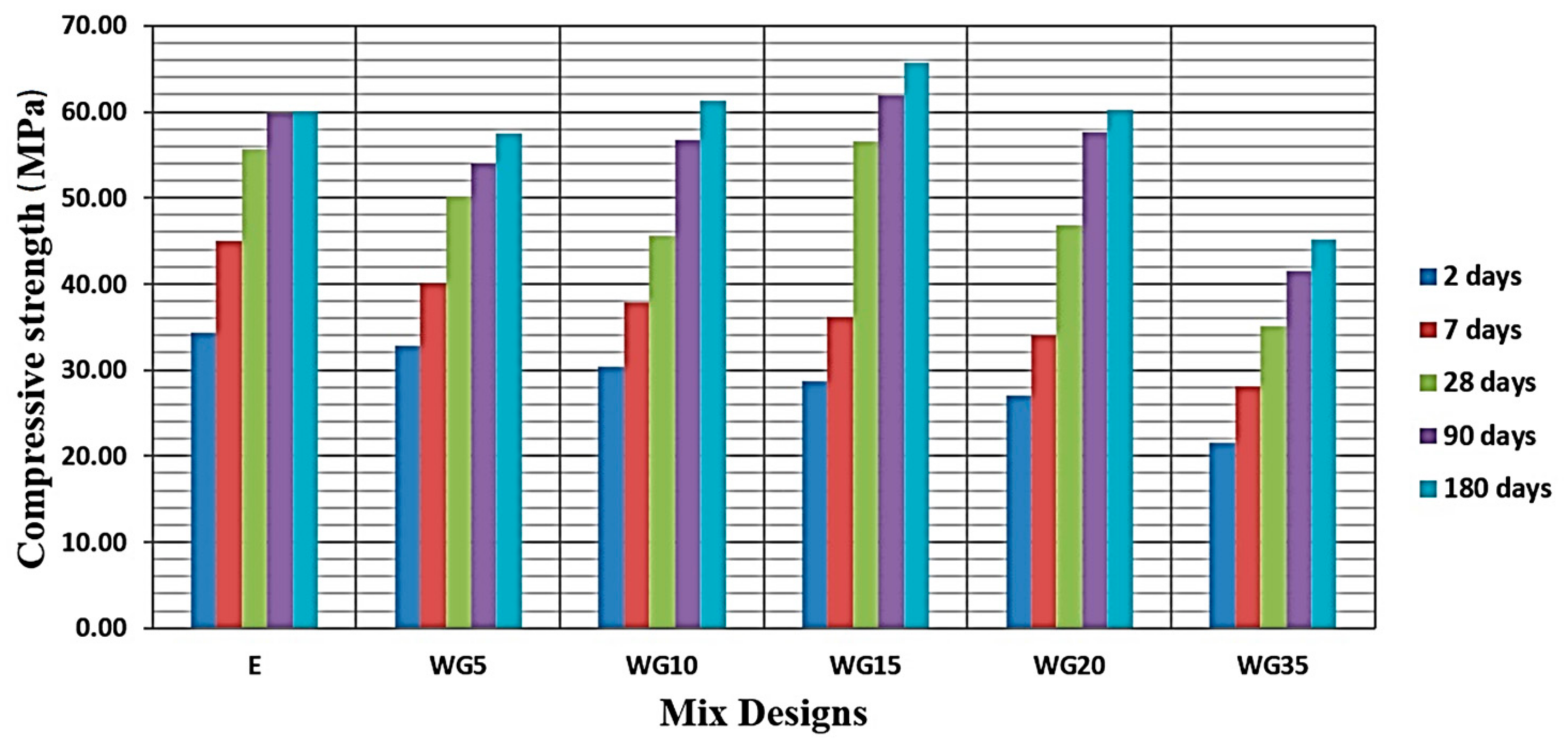

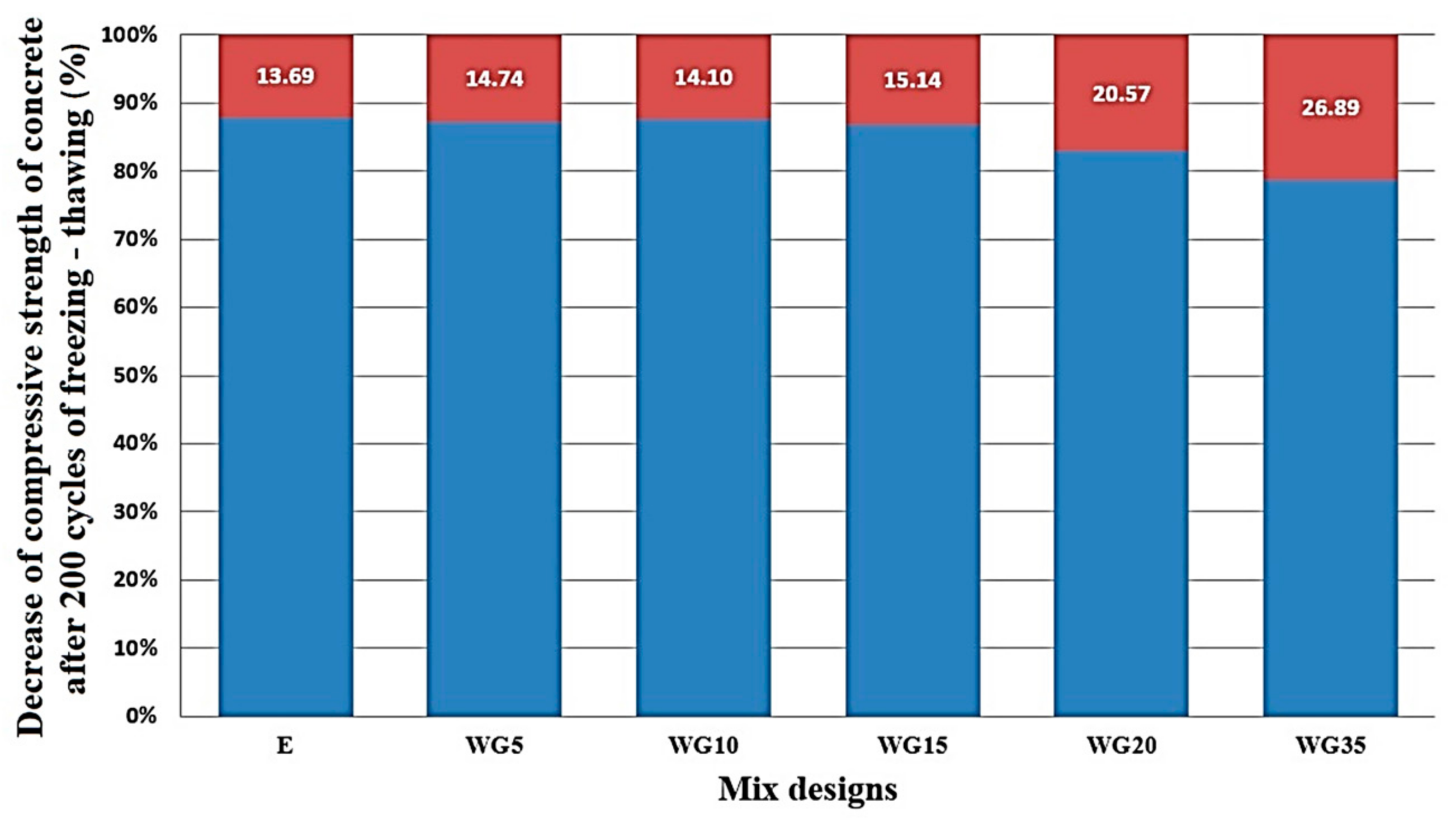
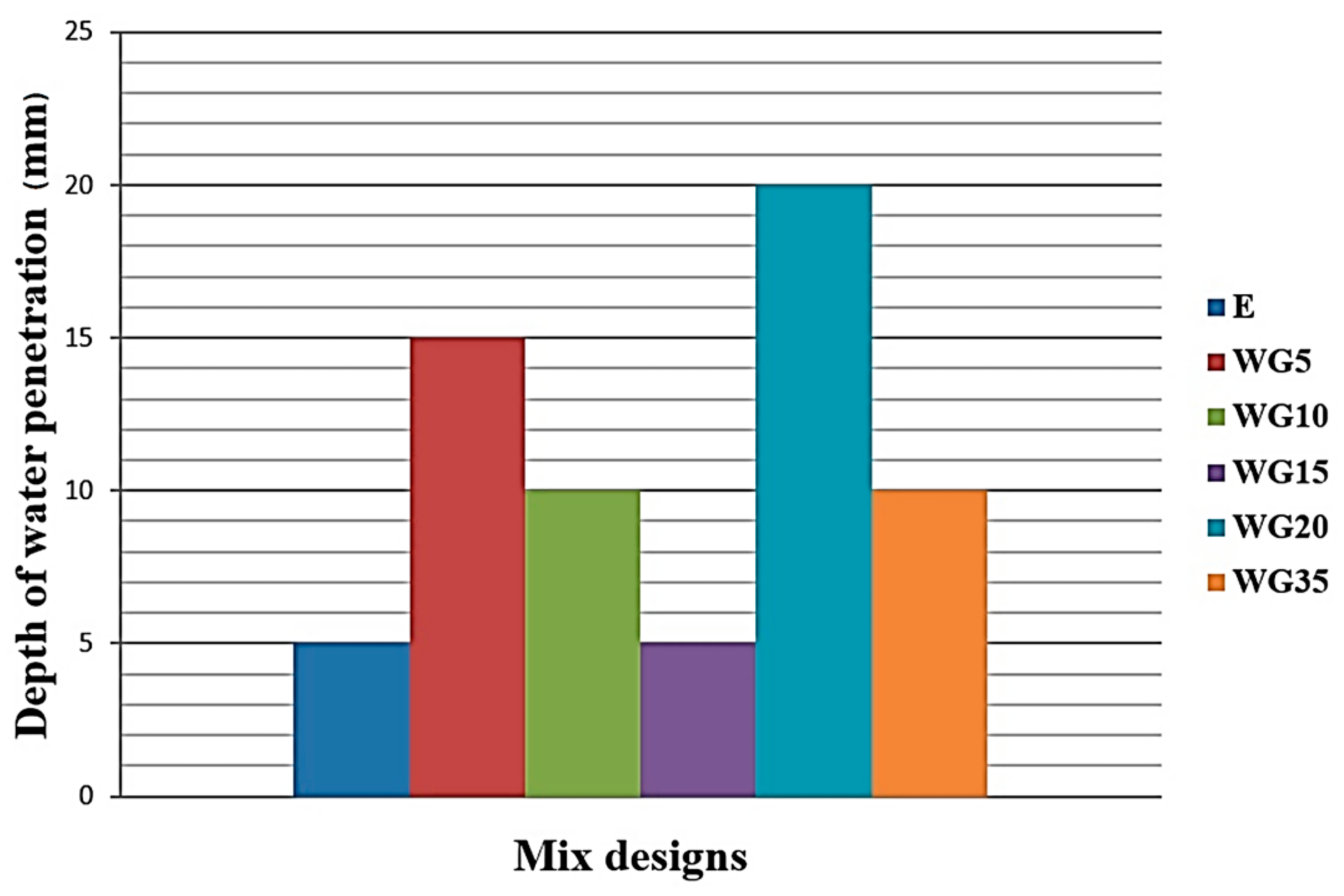
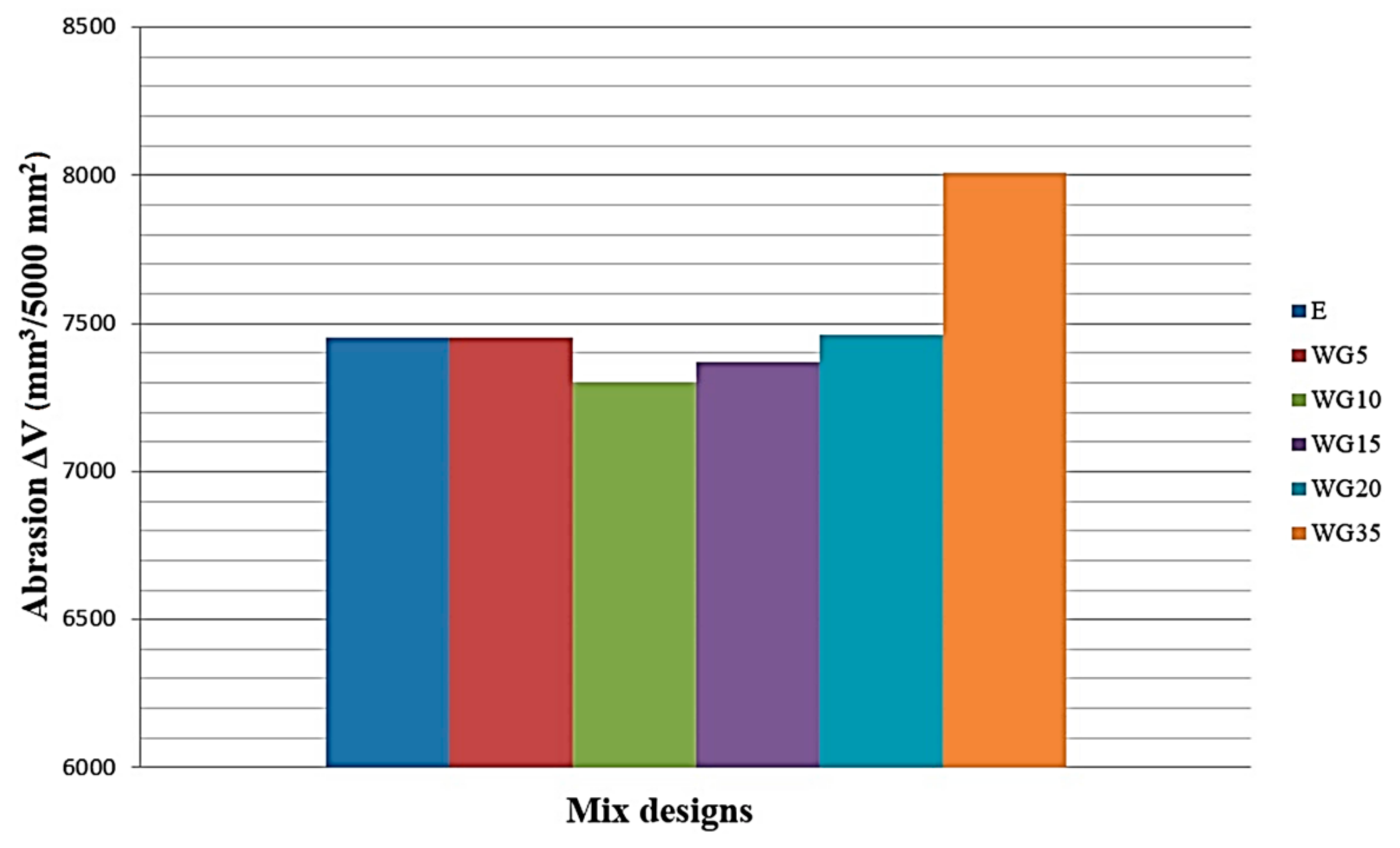
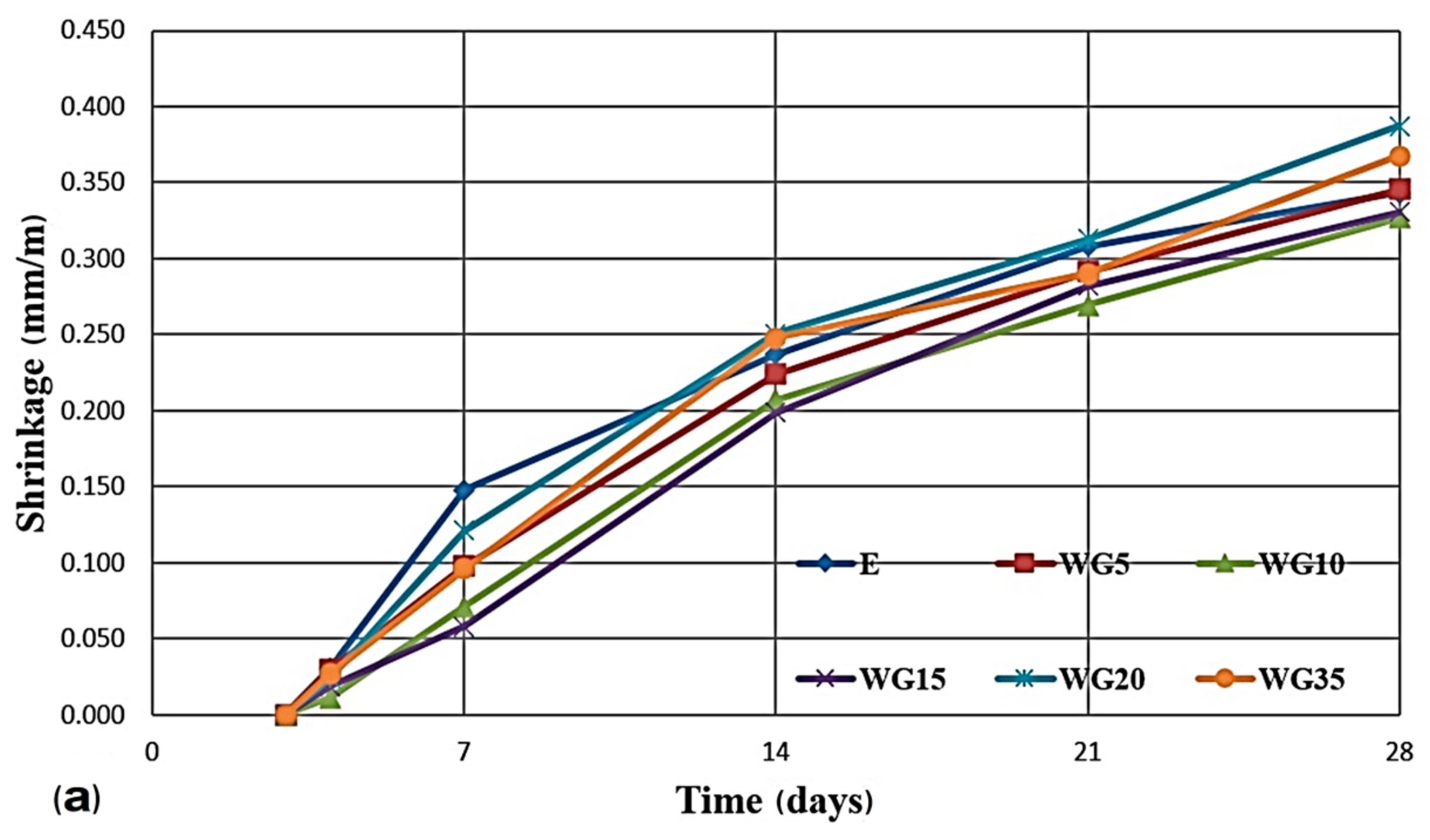
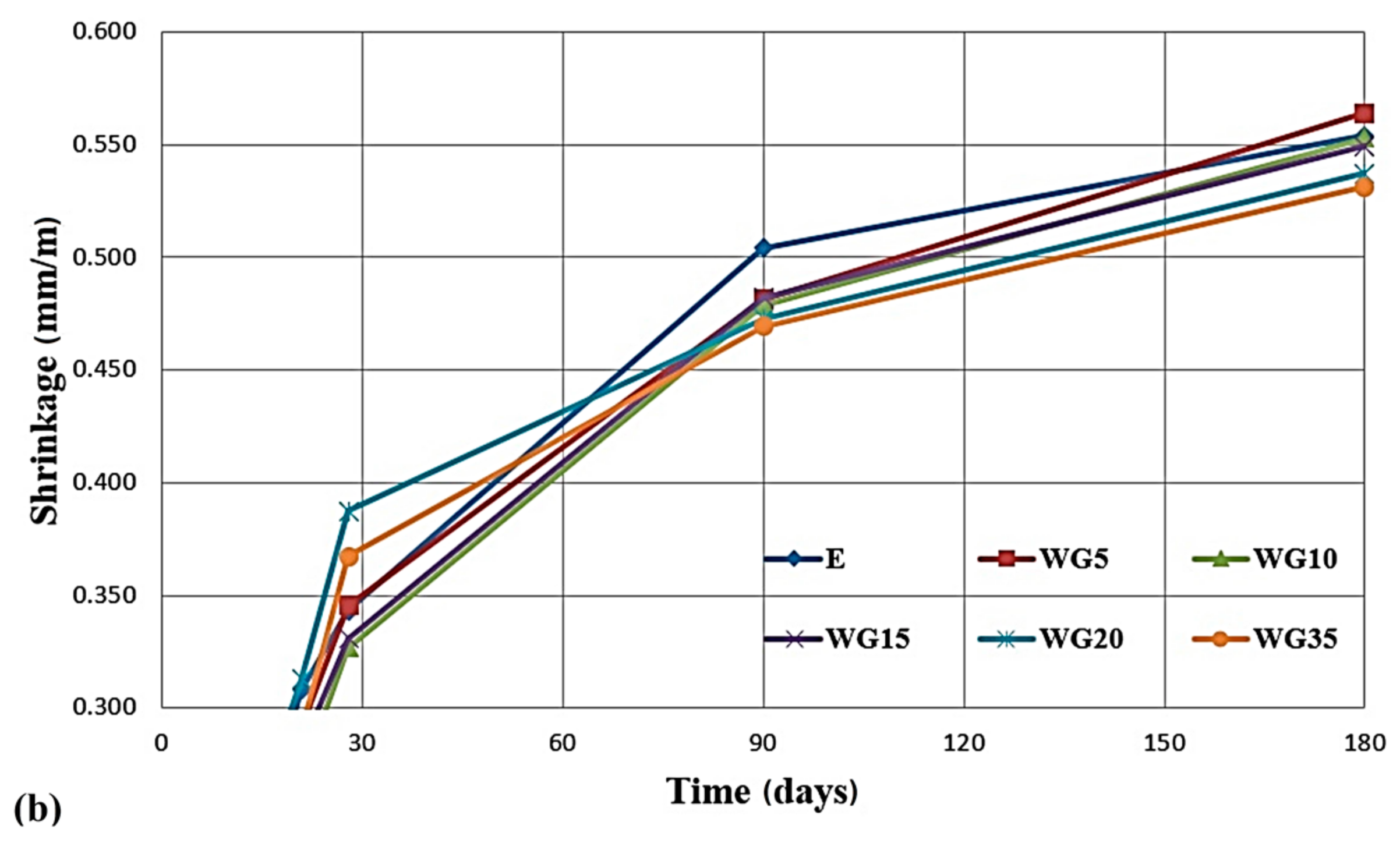
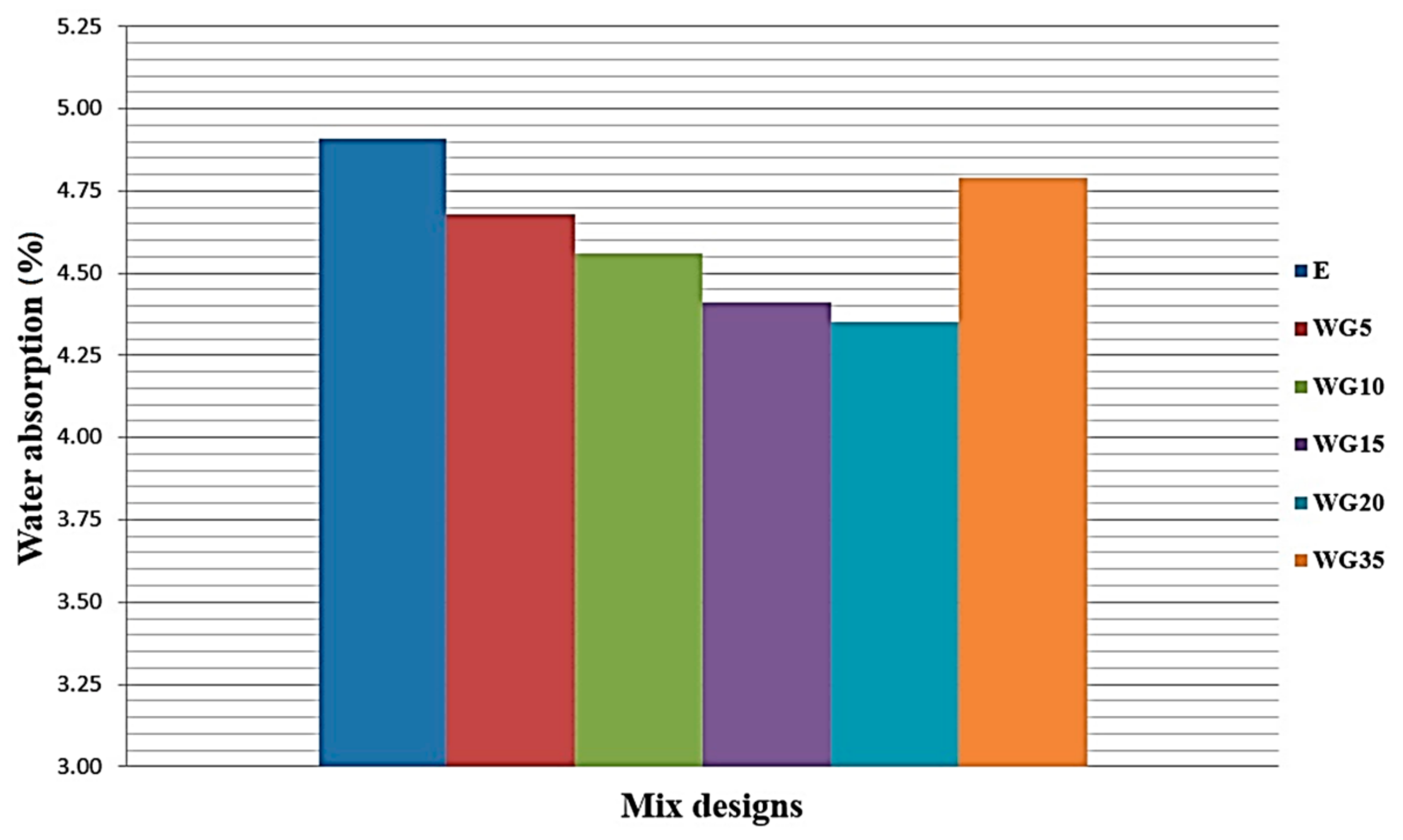
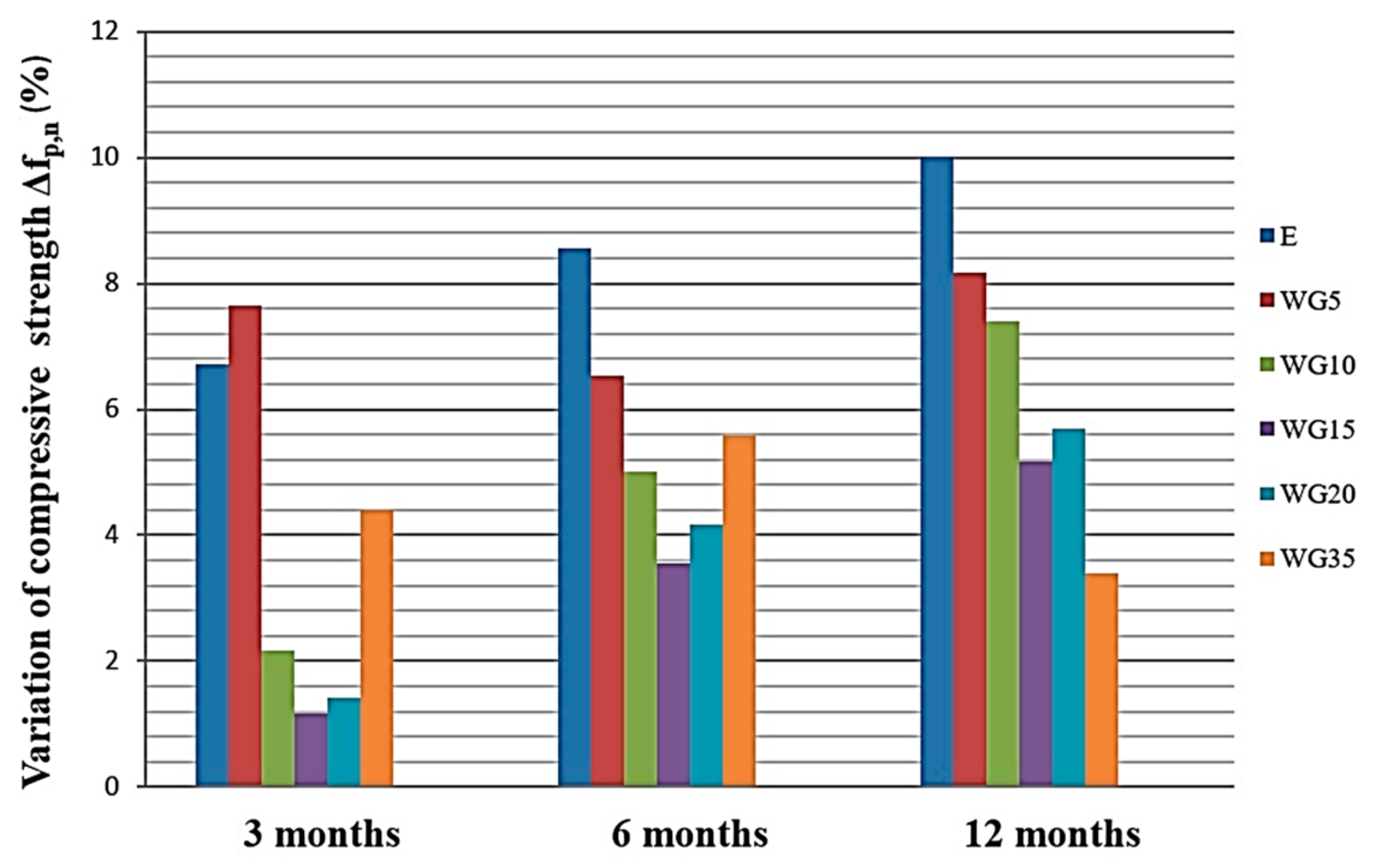
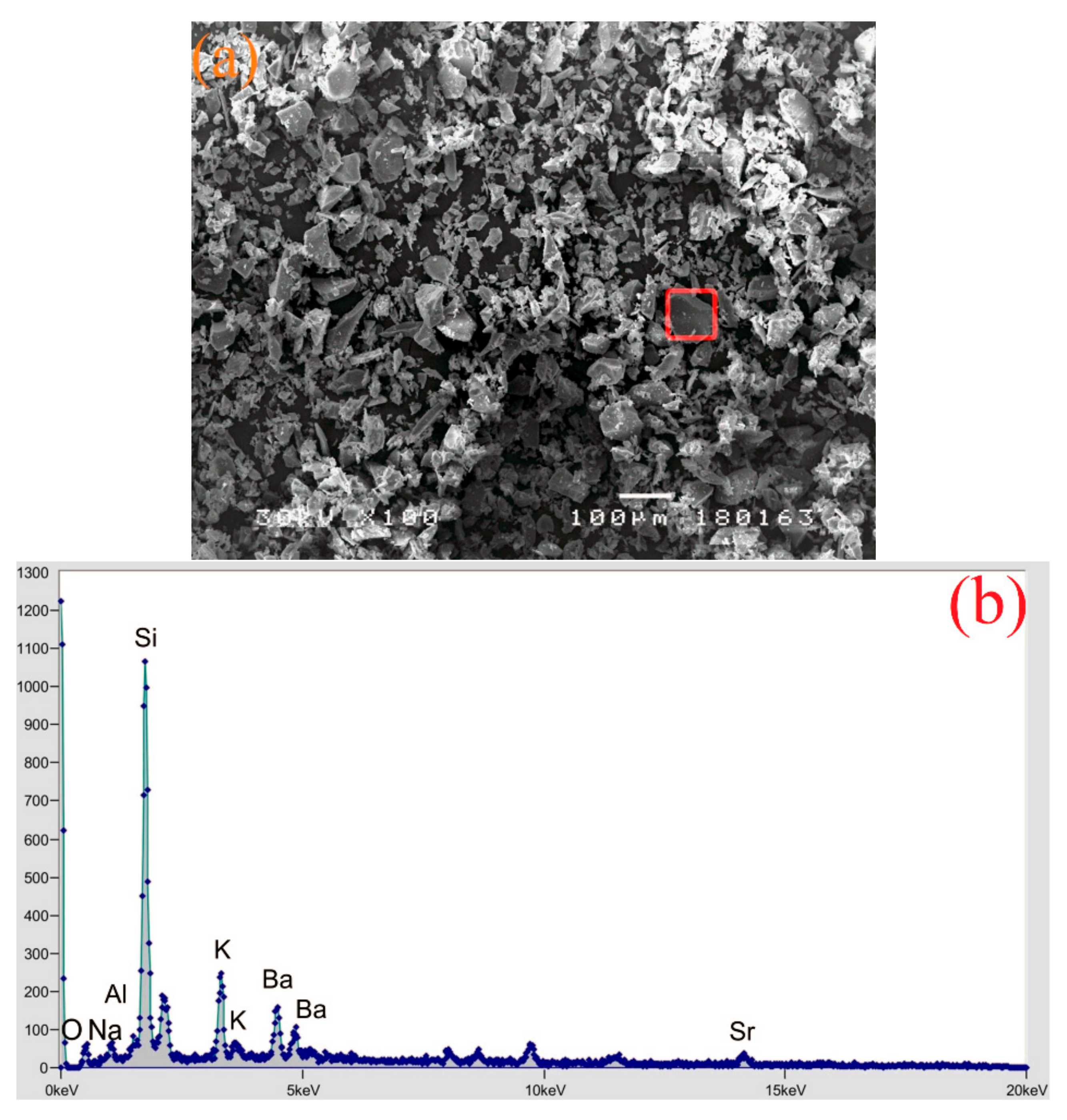
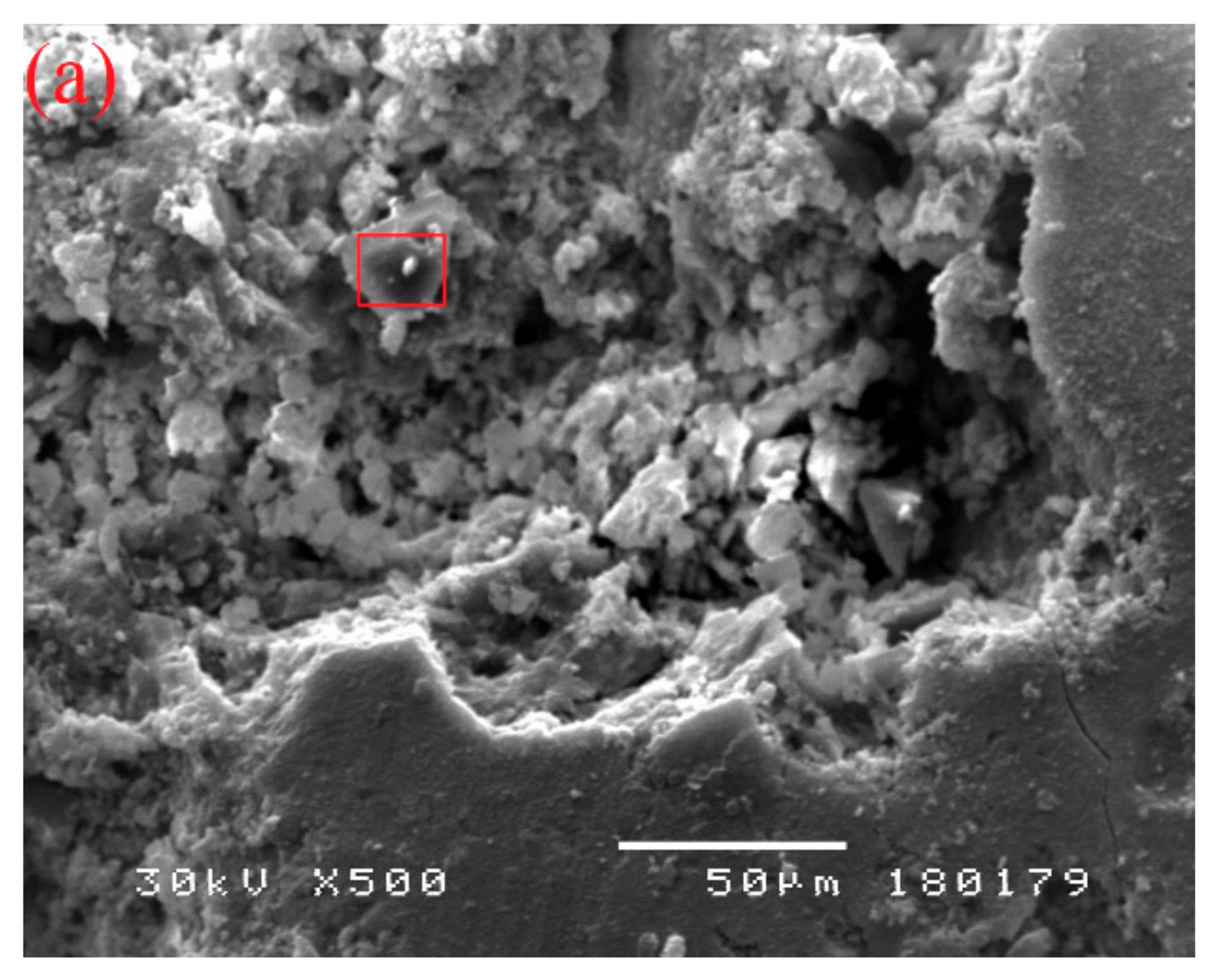
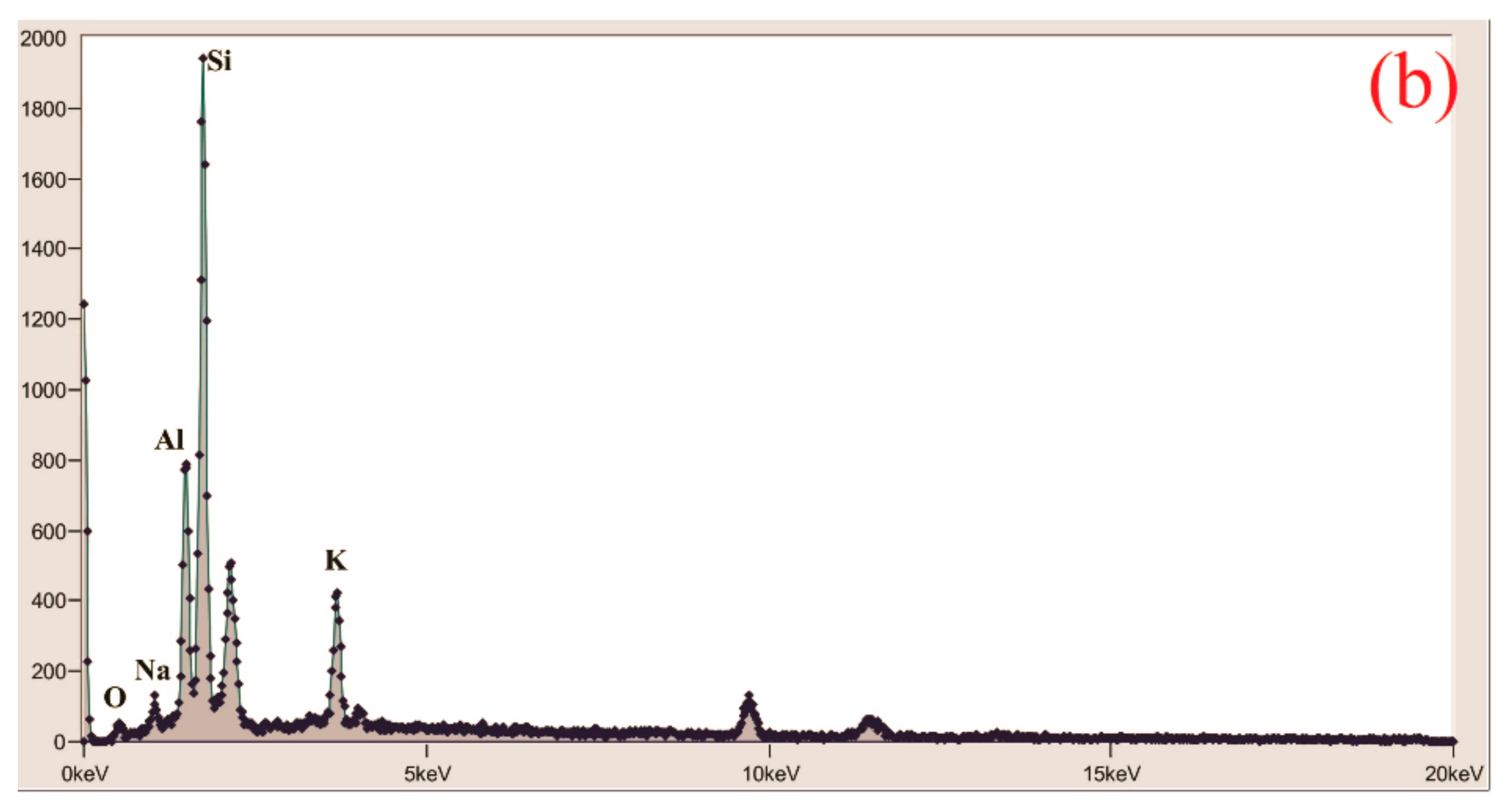
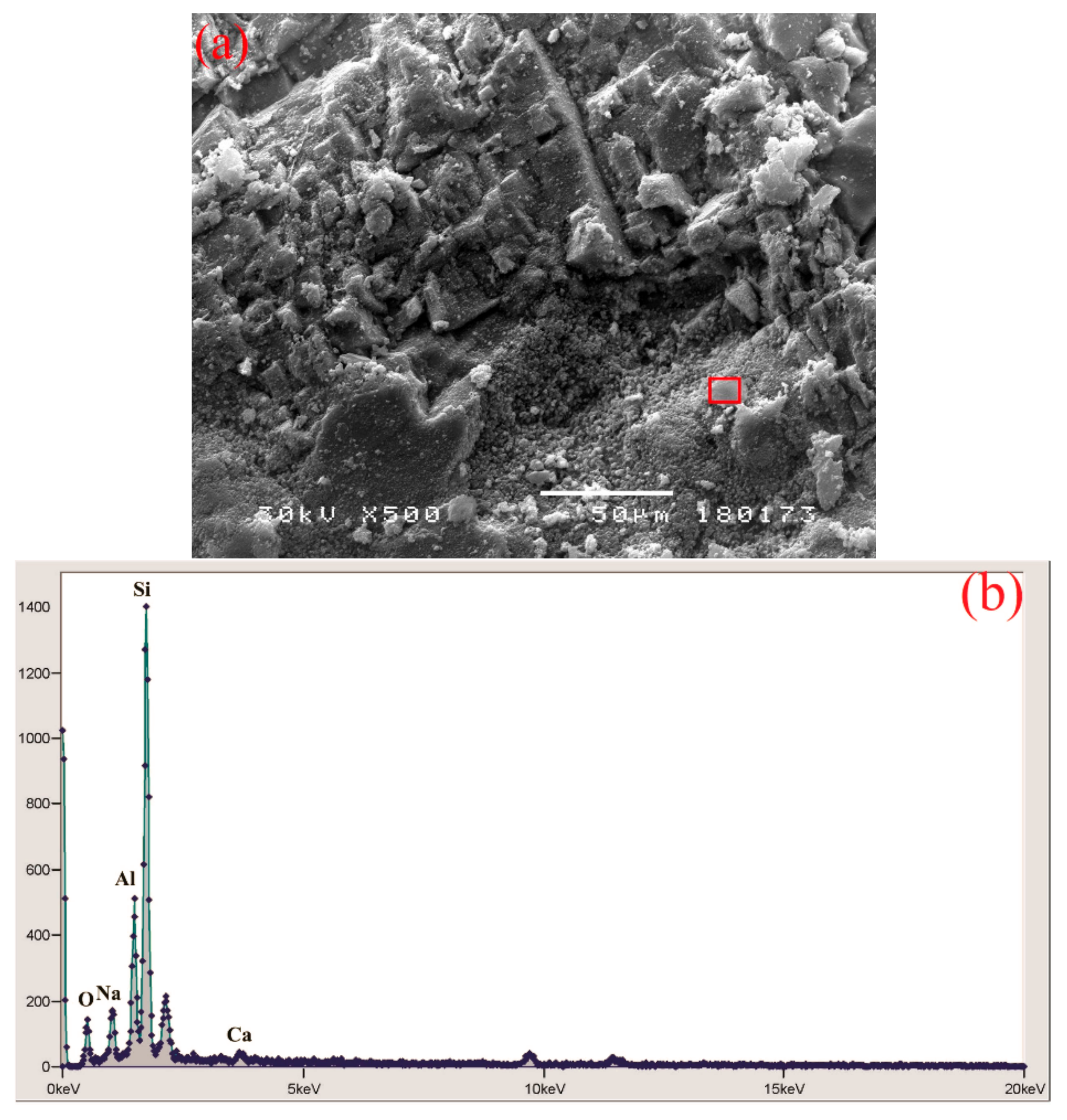
| Chemical Compound | Physical Characteristics | ||||||||||
|---|---|---|---|---|---|---|---|---|---|---|---|
| Binder | SiO2 (%) | Al2O3 (%) | Fe2O3 (%) | CaO (%) | MgO (%) | K2O (%) | Na2O (%) | SO3 (%) | LOI (%) | Specific Surface (Blaine) m2/kg | Density kg/m3 |
| CRT glass | 60.61 | 2.88 | 0.58 | 1.31 | 0.53 | 6.45 | 7.61 | 0.09 | 1.04 | 245 | 2840 |
| Cement | 19.30 | 4.28 | 2.87 | 62.8 | 2.22 | 0.91 | 0.21 | 3.05 | 2.26 | 394 | 3150 |
| Mortar Series | Activity Index (%) | |
|---|---|---|
| 28 Days | 90 Days | |
| Criterion according to EN 450-1 | min. 75% | min. 85% |
| WG5 | 95 | 96 |
| WG10 | 92 | 89 |
| WG15 | 90 | 85 |
| WG20 | 88 | 82 |
| WG25 | 83 | 81 |
| WG35 | 74 | 71 |
| Concrete | Aggregate | Cement | CRT | Water | Additive | |||
|---|---|---|---|---|---|---|---|---|
| 0/4 mm | 4/8 mm | 8/16 mm | CEM I 52.5R | <0.063 mm | City Wat. Supply | w/b | Super-Plasticizer | |
| kg/m3 | kg/m3 | kg/m3 | kg/m3 | kg/m3 | kg/m3 | - | kg/m3 | |
| E | 774 | 414 | 612 | 400 | - | 175.3 | 0.438 | 2.40 |
| WG5 | 774 | 414 | 612 | 380 | 20 | 175.3 | 0.438 | 2.40 |
| WG10 | 774 | 414 | 612 | 360 | 40 | 175.3 | 0.438 | 2.40 |
| WG15 | 774 | 414 | 612 | 340 | 60 | 175.3 | 0.438 | 2.40 |
| WG20 | 774 | 414 | 612 | 320 | 80 | 175.3 | 0.438 | 2.40 |
| WG35 | 774 | 414 | 612 | 260 | 140 | 175.3 | 0.438 | 2.40 |
| Test Description | Specification |
|---|---|
| Compressive strength | EN 12390-3 [36] |
| Alkali-silicate reactivity | ASTM C227 [37] |
| Freeze-thaw resistance | SRPS U.M1.206 annex R [38] |
| Freeze-thaw resistance with de-icing salts-scaling | CEN-TS_12390-9 [39] |
| Depth of penetration of water under pressure | EN 12390-8 [40] |
| Resistance to wear by abrasion (Böhme test) | EN 1340:2012, annex H [41] |
| Tests of shrinkage due to drying in the air | UNI 6555 [42] |
| Water absorption | EN 13755 [43] |
| Testing resistance to sulfate attack | Own testing program |
| Concrete Series | Cumulative Amount of Scaled Material for Each Sample after 28 Cycles S28 [kg/m2] | Damage Description |
|---|---|---|
| E | - | N/A |
| WG5 | - | N/A |
| WG10 | - | N/A |
| WG15 | - | N/A |
| WG20 | 0.02; 0.01; 0.09 | Finer mortar damage |
| WG35 | 0.34; 0.33; 0.27 | Surface damage, visible individual aggregate grains |
Publisher’s Note: MDPI stays neutral with regard to jurisdictional claims in published maps and institutional affiliations. |
© 2021 by the authors. Licensee MDPI, Basel, Switzerland. This article is an open access article distributed under the terms and conditions of the Creative Commons Attribution (CC BY) license (https://creativecommons.org/licenses/by/4.0/).
Share and Cite
Grdić, D.Z.; Topličić-Ćurčić, G.A.; Grdić, Z.J.; Ristić, N.S. Durability Properties of Concrete Supplemented with Recycled CRT Glass as Cementitious Material. Materials 2021, 14, 4421. https://doi.org/10.3390/ma14164421
Grdić DZ, Topličić-Ćurčić GA, Grdić ZJ, Ristić NS. Durability Properties of Concrete Supplemented with Recycled CRT Glass as Cementitious Material. Materials. 2021; 14(16):4421. https://doi.org/10.3390/ma14164421
Chicago/Turabian StyleGrdić, Dušan Zoran, Gordana Aleksandar Topličić-Ćurčić, Zoran Jure Grdić, and Nenad Srboljub Ristić. 2021. "Durability Properties of Concrete Supplemented with Recycled CRT Glass as Cementitious Material" Materials 14, no. 16: 4421. https://doi.org/10.3390/ma14164421
APA StyleGrdić, D. Z., Topličić-Ćurčić, G. A., Grdić, Z. J., & Ristić, N. S. (2021). Durability Properties of Concrete Supplemented with Recycled CRT Glass as Cementitious Material. Materials, 14(16), 4421. https://doi.org/10.3390/ma14164421







